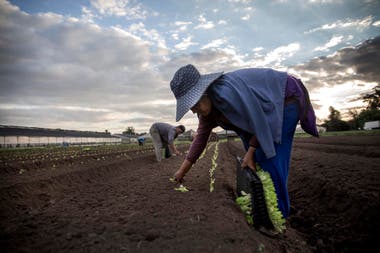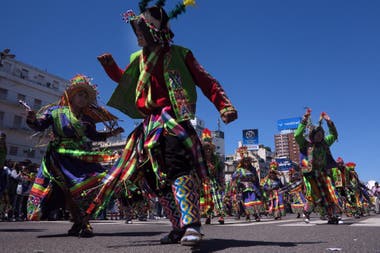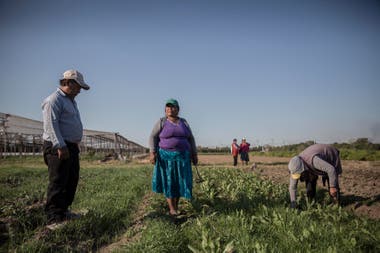
That they come to get us work. That saturate our health system. They do not pay taxes. That there are more and more. In our society there is a series of statements about Latin American migrants -especially about those who arrived from Bolivia, Paraguay and Peru- that has no support in reality. This is supported by different specialists in immigration matters, who see with concern that this circulation of prejudices violates the rights of those who come to our lands seeking to improve their quality of life.
“There are various myths about migrants in the region that are based on prejudice or false information,” says Gabriela Liguori, director of the Argentine Commission for Refugees and Migrants (Caref). Then, the specialist expands on the most recent belief held by the population and, assures, by not a few authorities: “It is often argued that migrants take advantage of social programs. This is totally false. Unfortunately there are many restrictions so that people who live in Argentina but were born in another country can access programs such as the AUH, Progresar, IFE, or non-contributory pensions. “
In the prejudices that weigh on migrant communities, the myth that our origin is exclusively white and european. Hence, what does not respond to that pattern is rejected and invisible. According to experts, the suspicion and mistrust that these groups generate in society worsened during the nineties.
“Second-class migrants”. Why some neighboring communities suffer racism in our country
In its report “Migrants and discrimination”, the National Institute against Migration, Xenophobia and Racism (Inadi) also points out that, in the last decades of the twentieth century, these prejudices were exacerbated by the process of labor flexibility that took place in the nineties. “In this framework, the reduction of work, job uncertainty and excessive competition generated the logic of ‘every man for himself‘, placing the responsibility on the other. This situation is reinforced with the immigrants, categorized, in a xenophobic way, as the culprits of the unemployment of the national population, “says the aforementioned work.
“If we talk about the stereotype of the immigrant or migrant that exists in our country, precisely Article 25 of the Constitution accounts for it (N. de la R .: This article maintains that the Federal Government will promote European immigration). has positively valued the migrations of European people, giving them a negative bias to Latin American, Asian or African migrations. It is for this reason that not all the migrant population in our country suffers discrimination, racism and / or xenophobia “, considers Lucila Somma, coordinator of Programs and projects at Inadi, an institution that has just launched the first issue of its magazine” Inclusive ” , dedicated entirely to the different forms that racism takes in our country.
Somma adds that this is what migrants who belong to Latin American groups suffer, especially those from Paraguay, Bolivia, Peru. “Those are the three main countries of origin of those who migrate to our country, but also of those who initiate the application for residence. These are not new currents. That implies that there is a root and a multiculturalism visible in the social fabric of Argentine identity that has nothing to do with the myths or prejudices held by a part of the population, “he says. And, in that sense, he reports that, from the Inadi, work is being done for its eradication through training , talks and awareness campaigns.

What are the main myths and what is true about them?
“Immigrants steal the jobs of Argentine women”
FALSE. First of all, it should be remembered that according to Law No. 25,871 (Migration Law), migrants residing in the Argentine Republic have the right to work Under the same conditions than the national ones.
“Academic research shows that migrants and nationals do not compete for the same jobs. The logic of the labor market” assigns “those who migrate certain spaces that are usually the most informal, precarious and worse paid. Migrant women, for example, tend to be included in the tasks of care and domestic service, “says Liguori, from Caref.
“Immigrants make it impossible for nationals to access public services”
FALSE. In principle, according to current immigration law, every migrant has the same rights than nationals in terms of access to education, health and social security, regardless of their immigration status. However, referents on the matter point out that, not infrequently, these people are often excluded and are denied access to the health and education system and access to social security, in general, because they do not have a DNI or find yourself in an irregular situation.
According to data from the Permanent Household Survey, migrants are more dependent on the public health care system, as they have lower levels of coverage social security and the private health sector, in line with their higher level of non-employment registration. However, the lack of coverage does not mean that the public health system is used. In fact, a 2015 report by the International Labor Organization shows a low incidence of care in public hospitals and Primary Health Care Centers (CAPS) by South American migrants, which reaches 4% of total queries.

“Public spending goes to migrants”
FALSE. According to data from the International Organization for Migration, several reports and studies show that the percentage of National Public Social Expenditure allocated to migrants in 2015 was online with the weight that these have in the total population of the country. In total, it was 0.7% of the Gross Domestic Product. The agency indicates that the highest percentage of that amount was allocated to social benefits in which the beneficiary contributed prior to obtaining the right to access it (in some cases over an extremely long period of time).
“Immigrants don’t pay taxes”
FALSE. Immigrants in an irregular situation pay taxes in many ways, direct or indirect. As an example, the value added tax (VAT) is one of the highest collection taxes and is paid every time a purchase is made, whether the person who consumes is national or foreign.
“In the country there are more and more migrants”
FALSE. Migrants in Argentina represent 5% of the total population of the country. Most of the migrants are bordering (80%), and their proportion it has never varied significantly.

SOURCES CONSULTED
- Report “Migrants and discrimination”, of the National Institute against Migration, Xenophobia and Racism (Inadi): http://inadi.gob.ar/contenidos-digitales/producto/migrantes-y-discriminacion/
- Migratory Profile of Argentina from the International Organization for Migration (2012):
https://publications.iom.int/books/perfil-migratorio-de-argentina-2012
- Document “Migration and national public spending”, of the International Organization for Migration (IOM):
https://www.odsargentina.gob.ar/public/documentos/seccion_publicaciones/ods/migrantes_version_web_media_final.pdf
- Study: “Living conditions of migrants in the Argentine Republic” (IOM, 2019):
http://argentina.iom.int/co/sites/default/files/publicaciones/Condiciones%20de%20vida%20de%20migrantes%20en%20la%20Rep%C3%BAblica%20Argentina%20-%20Final%20WEB.pdf
- “Labor Migrations in Argentina: Social Protection, Informality and sectoral heterogeneities” (ILO, 2015):
https://www.ilo.org/wcmsp5/groups/public/—americas/—ro-lima/—ilo-buenos_aires/documents/publication/wcms_379419.pdf
According to the criteria of
More information
.
Publicado en el diario La Nación




